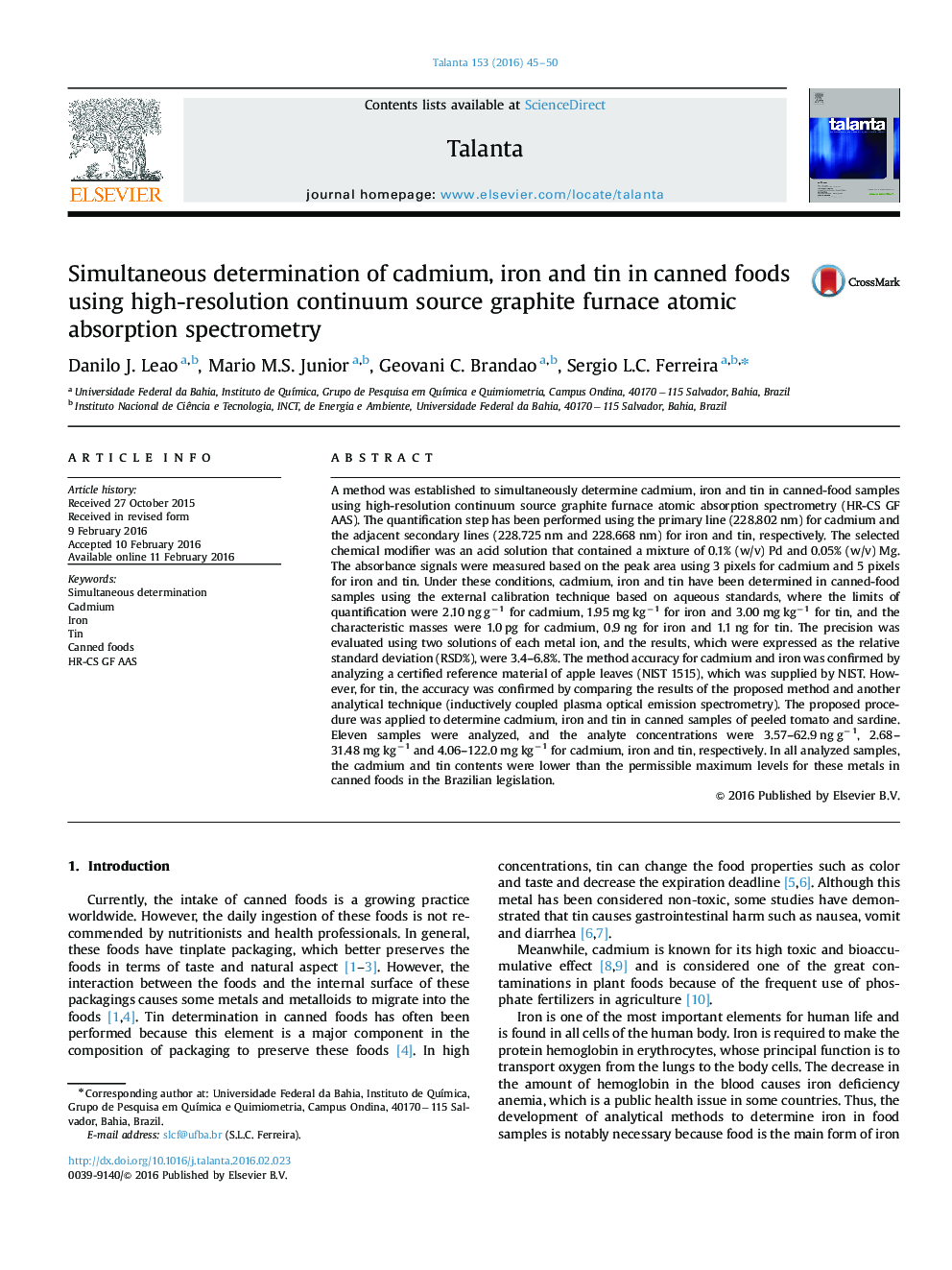| Article ID | Journal | Published Year | Pages | File Type |
|---|---|---|---|---|
| 1242555 | Talanta | 2016 | 6 Pages |
•A method for simultaneous determination of Cd, Fe and Sn by HR-CS GF AAS was proposed.•The three elements were measured using a same spectral window.•A single temperature program was used for quantification of both analytes.•The method was applied for analysis of canned food samples after acid digestion.
A method was established to simultaneously determine cadmium, iron and tin in canned-food samples using high-resolution continuum source graphite furnace atomic absorption spectrometry (HR-CS GF AAS). The quantification step has been performed using the primary line (228.802 nm) for cadmium and the adjacent secondary lines (228.725 nm and 228.668 nm) for iron and tin, respectively. The selected chemical modifier was an acid solution that contained a mixture of 0.1% (w/v) Pd and 0.05% (w/v) Mg. The absorbance signals were measured based on the peak area using 3 pixels for cadmium and 5 pixels for iron and tin. Under these conditions, cadmium, iron and tin have been determined in canned-food samples using the external calibration technique based on aqueous standards, where the limits of quantification were 2.10 ng g−1 for cadmium, 1.95 mg kg−1 for iron and 3.00 mg kg−1 for tin, and the characteristic masses were 1.0 pg for cadmium, 0.9 ng for iron and 1.1 ng for tin. The precision was evaluated using two solutions of each metal ion, and the results, which were expressed as the relative standard deviation (RSD%), were 3.4–6.8%. The method accuracy for cadmium and iron was confirmed by analyzing a certified reference material of apple leaves (NIST 1515), which was supplied by NIST. However, for tin, the accuracy was confirmed by comparing the results of the proposed method and another analytical technique (inductively coupled plasma optical emission spectrometry). The proposed procedure was applied to determine cadmium, iron and tin in canned samples of peeled tomato and sardine. Eleven samples were analyzed, and the analyte concentrations were 3.57–62.9 ng g−1, 2.68–31.48 mg kg−1 and 4.06–122.0 mg kg−1 for cadmium, iron and tin, respectively. In all analyzed samples, the cadmium and tin contents were lower than the permissible maximum levels for these metals in canned foods in the Brazilian legislation.
Graphical abstractFigure optionsDownload full-size imageDownload as PowerPoint slide
